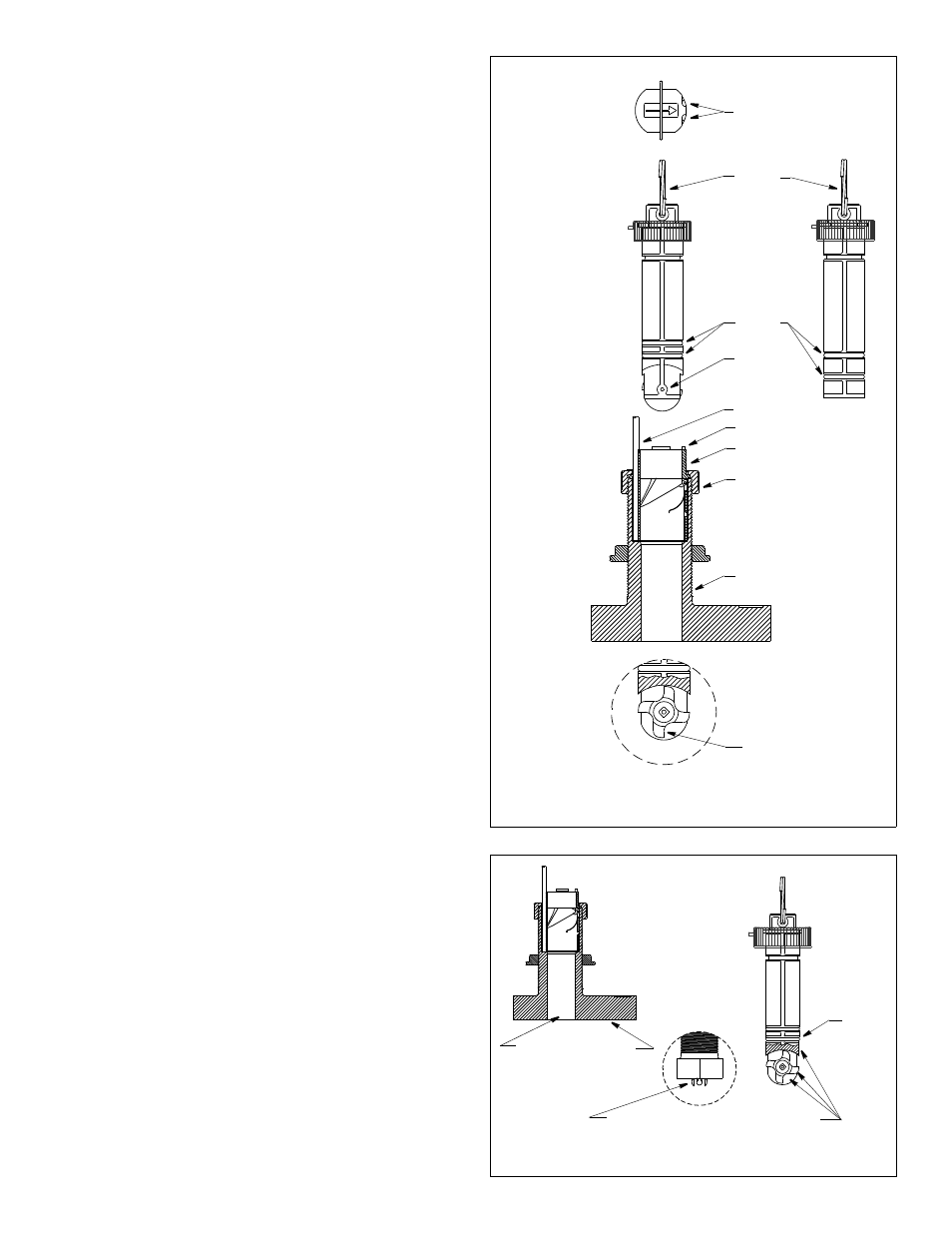Cable routing & connecting, Check for leaks, Operation & maintenance – Airmar B744V User Manual
Page 3: Anti-fouling paint, Cleaning the sensor, How the valve works: b744v/vl, Using the blanking plug: b744v/vl

Figure 3. Paddlewheel insert, blanking plug,
BOW
►
flat side of
paddlewheel
paddlewheel
cap nut
paddlewheel
top view of
housing and
blade faces
paddlewheel
insert
insert
valve assembly
housing
and valve assembly
(B744V shown)
notches
key (2)
valve
assembly
insert detail
cable
blanking
plug
direction of
arrow on top
of insert
(toward bow)
Copyright © 2005 Airmar Technology Corp.
pull ring
O-rings
shaft
Figure 4. Anti-fouling paint
(B744V shown)
Paint outside wall below the lower O-ring
including exposed end, paddlewheel cavity and paddlewheel
Paint exposed housing
lower
O-ring
and bore up 30mm (1-1/4")
paddlewheel
insert
housing
detail
Copyright © 2005 Airmar Technology Corp.
3
Cable Routing & Connecting
CAUTION: If the sensor came with a connector, do not remove it
to ease cable routing. If the cable must be cut and spliced, use
Airmar’s splash-proof Junction Box No. 33-035 and follow the
instructions supplied. Removing the waterproof connector or
cutting the cable, except when using a water-tight junction box,
will void the sensor warranty.
1. Route the cable to the instrument, being careful not to tear the
cable jacket when passing it through the bulkhead(s) and other
parts of the boat. Use grommets to prevent chafing. To reduce
electrical interference, separate the sensor cable from other
electrical wiring and the engine. Coil any excess cable and
secure it in place using cable ties to prevent damage.
2. Refer to the echosounder owner’s manual to connect the
sensor to the instrument.
Check for Leaks
When the boat is placed in the water, immediately check around
the sensor for leaks. Note that very small leaks may not be readily
observed. Do not leave the boat in the water for more than 3
hours before checking it again. If there is a small leak, there may
be considerable bilge water accumulation after 24 hours. If a leak
is observed, repeat “Bedding” and “Installing” immediately (see
High-Performance Fairing Instructions).
Operation & Maintenance
Anti-fouling Paint
Surfaces exposed to salt water must be coated with anti-fouling
paint. Use water-based anti-fouling paint only. Never use ketone-
based paint since ketones can attack many plastics possibly
damaging the transducer. Reapply paint every 6 months or at the
beginning of each boating season.
B744V/VL—Paint the following surfaces (see Figure 4).
• Exposed areas of the housing including the transducer’s face
• Bore of the housing up 30mm (1-1/4")
• Outside wall of the paddlewheel insert below the lower O-ring
• Paddlewheel cavity
• Paddlewheel
• Blanking plug below the lower O-ring including the exposed end
Cleaning the Sensor
Aquatic growth can accumulate rapidly on the sensor’s surface,
reducing its performance within weeks. Clean the surface with
mild household detergent and a Scotch-Brite® scour pad.
B744V/VL—If fouling on the insert is severe, push out the
paddlewheel shaft using a spare shaft or a 4-D finish nail with a
flattened point. Then lightly wet sand the paddlewheel with fine
grade wet/dry paper.
How the Valve Works: B744V/VL
WARNING: The valve is not a watertight seal!
Always install the paddlewheel insert or the blanking plug secured
with the INSERT nut and safety wire for a watertight seal.
The multisensor incorporates a self-closing valve which minimizes
the flow of water into the vessel when the paddlewheel insert is
removed (see Figure 3). The curved flap valve is activated by both
a spring and water pressure. Water pushes the flap valve upward
to block the opening, so there is no gush of water into the boat.
Using the Blanking Plug: B744V/VL
To protect the paddlewheel, use the blanking plug:
• When the boat will be kept in salt water for more than a week.
• When the boat will be removed from the water.
• When aquatic growth buildup on the paddlewheel is suspected
due to inaccurate readings from the instrument.
exposed
